Intermodal transport for turbulent times
Prestige PR
Włodarzewska 81C lok 81
02-393 Warszawa
i.wisniewska|prestigepr.pl| |i.wisniewska|prestigepr.pl
508 927 958
www.prestigepr.pl
Europe and Poland are switching to intermodal transport
The unforeseen and sudden events in the world in recent years, resulted in safety becoming a key aspect in business. In this context, more and more is being talked about the intermodal transport, which still has a huge development potential in Poland. It is a type of transport that creates modern chains connecting several types of transport into one system, ensuring greater predictability and regularity of shipping, than road transport alone. Using mainly railways and waterways, it is also more environmentally friendly than road freight.
- The development of intermodal transport stems from the security it gives companies in the current, difficult time for business. It is the best logistics solution in the economic downturn, when peace of mind is more important than ever. The development of this type of shipping is closely related to the railway. The network of reloading terminals is constantly developing in Poland. More and more entities are interested in expanding the infrastructure for this form of transport. More than 20 companies are already involved in the implementation of intermodal rail transport in our country. We are currently looking for parcels with railway sidings for several clients. It should also be noted that this type of transport is very prospective in the context of EU directives, due to lower emissions than road transport - says Bartłomiej Zagrodnik, Managing Partner, CEO at Walter Herz.
Less emissions, more subsidies
The intermodal business will grow faster in the near future, increasing the share of rail transport, due to the European Union policy and the global trend of reducing CO2. The EU plans to minimize the effects of the development of road transport, such as air pollution, road damage, noise and safety risks. The goal is to reduce greenhouse gas emissions from transport by 60 per cent by 2050. They want to achieve it by transferring 30 per cent of transport over a distance of over 300 km from roads to lower-emission means of transport, and reducing road transport by 50 per cent by 2050.
The difficulty with intermodal transport in our country is the low density and uneven distribution of intermodal terminals, where transshipment to another means of transport takes place. According to Statistics Poland, in 2021 in Poland we had 39 active terminals where container units were reloaded between two different means of transport. Including 4 sea terminals, handling sea-rail, sea-road shipments and 35 land terminals, which are constantly growing. In June 2022, Laude Smart Intermodal opened its largest domestic terminal in Zamosc, which will be used to receive cargo from Ukraine.
However, as much as 75 per cent of goods transported over 300 km in Poland are still transported via trucks. Meanwhile, in the EU in 2020, long-distance road transport of containers amounted to the average of only 40.5 per cent total road transport of cargo containers.
Great potential for development of the industry
The potential of intermodal transport in Poland is slowly, but regularly growing. According to Statistics Poland, in 2021, a total of over 82 million tons of containerized cargo was handled in intermodal terminals in Poland, which means a several percent increase compared to the previous year. Most cargo was transported by sea. Last year, intermodal rail transport shipped 26.5 million tons of cargo in Poland. 23 companies provided intermodal rail transport.
Poland has the right conditions for the development of container transport. Mainly, due to high density of the railway network and the convenient location of our country at the intersection of international transport routes. This is particularly important in the perspective of increasing the scale of transport from the Asian market. While in 2011, goods were transported between China and Europe by several trains, in 2018 there were over 6 thousand of them. Over 80 per cent of cargo on the Asia - Europe route passes through Poland. The problem, however, is the low capacity on our eastern border and the current speed of Polish rail transport.
– Intermodal transport works great in the European traffic. The pace of changes in the global economy in recent years has made everybody pay more attention to transporting wisely in terms of time and costs. And this, among others, gave room for the development of intermodal transport. The network of intermodal connections that we have created is based on the concept of building a regular network of daily rail connections, enabling the transport of containerized cargo over a long section of the route and correlated with it by road from/to the place of shipment or destination. The network of connections has the advantage of providing access to this method of transport, both for large regular cargo sequences and for single container shipments. Our intermodal trains run on schedules and take containers just like passenger trains take travelers. Terminals connected in a network of regular connections are sort of transfer stops that enable optimization of the process - explains Monika Konsor-Fąferek, Marketing and Development Director at PCC Intermodal SA.
– Today, the cost of transport is measured in a broad aspect, also taking into account the impact on the environment. Intermodal transport allows to reduce carbon footprint. Trains, as an environmentally friendly means of transport, ship containers over long distances, e.g. between Gliwice and Antwerp (almost1200 km), and on the last part of the route (50-100 km), cargo is delivered to the door by car. Delivery planning based on a terminal located close to the production plant is easier and enables adjustment of logistics in sudden and surprising situations - adds Monika Konsor-Fąferek.
Faster growth in Europe than in Poland
Intermodal transport also allows to more efficiently overcome the challenges faced by road transport, such as the lack of drivers or an increase in salaries. Market analysis shows that standard vertical handling technologies in the case of container transport become competitive compared to road-only transport over a distance of about 1000 km. Looking from the perspective of environmental efficiency, most intermodal transport chains transported over a distance of 600 km already have lower external costs.
An obstacle to the development of this type of services in Poland is still the low unification of semi-trailers used for intermodal transport. There is an insufficient number of those that can be used, both in road and rail transport. In addition, it is difficult to count on government programs supporting the competitiveness of railways in our country, which the intermodal business enjoys, for example in Germany.
The intermodal industry in Europe is growing faster than in Poland. In 2021, combined transport saw a record high annual result in terms of the amount of transported cargo. The New Silk Road Asia-Europe railway also broke a record in this regard.
Building new supply chains
According to many analyses, transshipment capacity in the EU will not be sufficient to meet demand by 2030. The availability of terminals throughout the trans-European transport network requires investment. Most modernizations are needed in Spain, France and Italy. Many sections of the TEN-T network need structural upgrades, in order to enable the transport of semi-trailers by train. According to estimates, investments of around EUR 7.7 billion are required to remove network constraints.
The conflict in Ukraine revealed the strategic importance of railways, as road routes were disrupted and Ukrainian ports were blocked. It turned out that the railway is irreplaceable for transport over long distances. If, with the EU funds, new terminals were launched and existing ones expanded, which would create new logistic chains after the end of the war, we would be able to think about using railway routes from East to West Europe on a large scale.
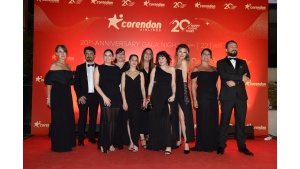
Linie lotnicze Corendon Airlines świętowały 20. lecie działalności podczas spektakularnej Gali w Antalya Cosmos Theatre
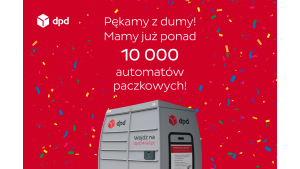
DPD Polska zainstalowała ponad 10 tys. automatów paczkowych w sieci DPD Pickup. Sieć obejmuje już ponad 32 tys. punktów i automatów paczkowych
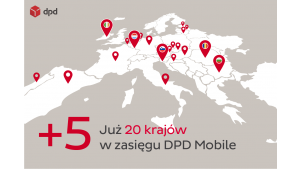
DPD Mobile z kolejnymi państwami na mapie Europy. Wysyłki międzynarodowe z aplikacji już do 20 państw
Więcej ważnych informacji
 Jedynka Newserii
Jedynka Newserii

 Jedynka Newserii
Jedynka Newserii

Konsument
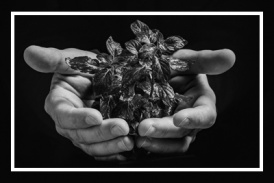
Tylko 35 proc. Celów Zrównoważonego Rozwoju ONZ możliwe do osiągnięcia przed 2030 r. Potrzebna ściślejsza współpraca międzynarodowa
Jak wynika z raportu ONZ, choć w ciągu ostatniej dekady dzięki dążeniu do realizacji przyjętych celów udało się poprawić życie milionów ludzi na całym świecie, to jednak tempo zmian pozostaje zbyt wolne, by dało się je osiągnąć do 2030 roku. Postęp hamują przede wszystkim eskalacja konfliktów, zmiana klimatu, rosnące nierówności i niewystarczające finansowanie. Jak wynika ze sprawozdania Parlamentu Europejskiego, problemem jest także brak ścisłej współpracy międzynarodowej i sceptyczne podejście niektórych państw ONZ.
Przemysł spożywczy
UNICEF: Wszystkie dzieci poniżej piątego roku życia w Gazie cierpią z powodu niedożywienia. Sytuacja jest katastrofalna

Ataki Izraela na Strefę Gazy i jej izolacja doprowadziły do całkowitego załamania podstawowych usług i ograniczenia możliwości dostaw i dystrybucji pomocy humanitarnej – wskazuje UNICEF. W efekcie setki tysięcy Palestyńczyków są w sytuacji ciągłego zagrożenia życia i cierpią z powodu niedożywienia i głodu. Ta klęska dotyczy praktycznie wszystkich dzieci poniżej piątego roku życia. Konflikty są jednym z głównych przyczyn braku bezpieczeństwa żywnościowego, głodu i niedożywienia na świecie. Szczególnie dotyczy to Afryki i Azji Zachodniej.
Prawo
Branża ciepłownictwa czeka na unijną i krajową strategię transformacji. Liczy na większe fundusze i korzystne regulacje

Komisja Europejska zapowiedziała rozpoczęcie w I kwartale 2026 roku prac nad strategią dla ciepłownictwa i chłodnictwa. Nad tym strategicznym dokumentem w zakresie ciepłownictwa pracuje także polski rząd. Branża podkreśla, że obie te strategie będą miały kluczowe znaczenie dla trwającej transformacji w ciepłownictwie, czyli przyszłości ogromnych inwestycji, które czekają sektor do 2050 roku. Jednocześnie apeluje o większe wsparcie tego procesu ze środków publicznych.
Partner serwisu
Szkolenia
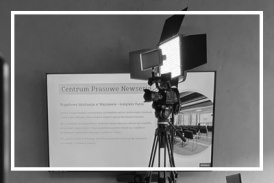
Akademia Newserii
Akademia Newserii to projekt, w ramach którego najlepsi polscy dziennikarze biznesowi, giełdowi oraz lifestylowi, a także szkoleniowcy z wieloletnim doświadczeniem dzielą się swoją wiedzą nt. pracy z mediami.
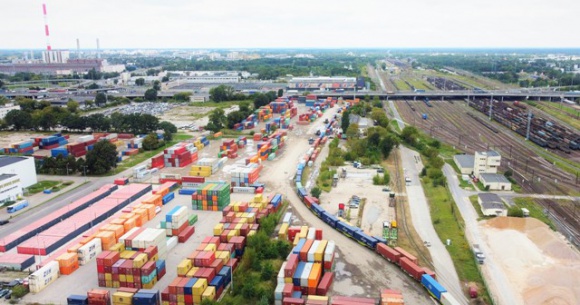

![Nestlé w Polsce podsumowuje wpływ na krajową gospodarkę. Firma wygenerowała 0,6 proc. polskiego PKB [DEPESZA]](https://www.newseria.pl/files/1097841585/fabryka-nesquik_1,w_85,r_png,_small.png)





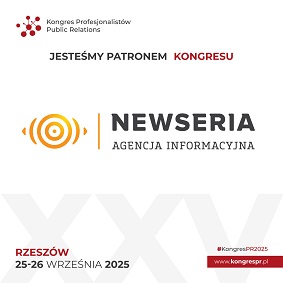
.gif)

 |
| |
| |
|